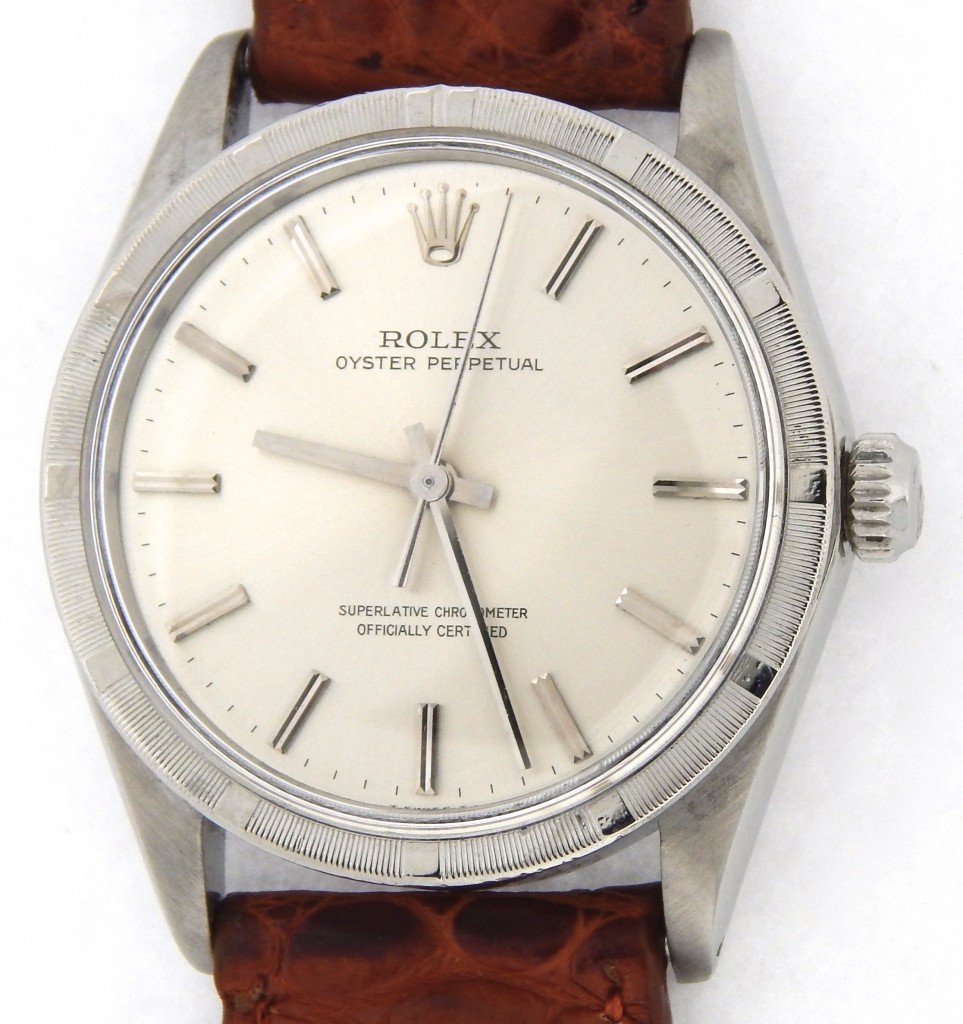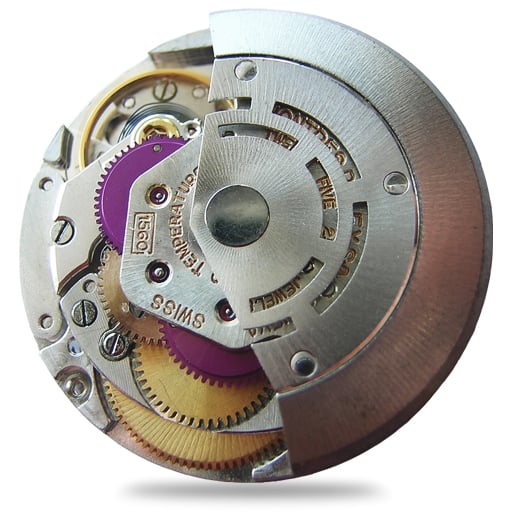Notes: Vintage Gents Rolex Oyster Perpetual in 14k yellow gold Ref #1007 circa 1940-41. On a non-original strap, with original gold plated tang buckle. Engine turned bezel with raised acrylic crystal. Screw down caseback, case diameter 34mm. Self-winding movement. Black dial with applied gold arrow hour markers. Central sweep second hand.
Mechanism: The 15xx movements were in production from 1957 until 1977. In the early days of the company, Rolex sourced the intricate movements that powered their watches from the likes of Aegler, one of Switzerland’s finest watchmakers. It wasn’t until 1957 that they developed their own truly in-house movement, the 1500 series. They became a mainstay of the company, remaining in production for 20 years. Rolex proved themselves as thoroughly reliable engines inside a number of Rolex’s most iconic designs. Two of the most dependable and hardworking iterations were the Rolex 1560 and 1570. They base these movements on the same architecture as the first caliber in the series, the 1530. But where the 1530 wasn’t a chronometer grade movement, meaning it hasn’t passed the vigorous testing set down by the COSC (the Official Swiss Chronometer Testing Institute), both the 1560 and 1570 were.
The unfussiness of the original, no-date movement made it the ideal caliber to sit inside the Oyster Perpetual series. This began with the ref. 1002 released at the end of the fifties. Its modest height of 5.75mm and diameter of 28.5mm, or 12.5 lignes, allowed it to fit comfortably in the 34mm to 36mm cases of the range. Note that though this mechanism is a chronometer, it does NOT have a hacking feature.
The unfussiness of the original, no-date movement made it the ideal caliber to sit inside the Oyster Perpetual series. This began with the ref. 1002 released at the end of the fifties. Its modest height of 5.75mm and diameter of 28.5mm, or 12.5 lignes, allowed it to fit comfortably in the 34mm to 36mm cases of the range. Note that though this mechanism is a chronometer, it does NOT have a hacking feature.
Family Notes: In 1926, Hans Wilsdorf introduced the Oyster watch which used a waterproof case, hence the name. He added "Perpetual" to the name when in 1933 he introduced a reliable automatic self-winding watch. Hence the name means "Waterproof, Self-Winding" in Rolex-speak and generally means the watch is water resistant to a depth of 100 meters.
Item created by: gdm on 2018-09-30 11:08:31. Last edited by gdm on 2018-09-30 11:09:04
If you see errors or missing data in this entry, please feel free to log in and edit it. Anyone with a Gmail account can log in instantly.
If you see errors or missing data in this entry, please feel free to log in and edit it. Anyone with a Gmail account can log in instantly.



